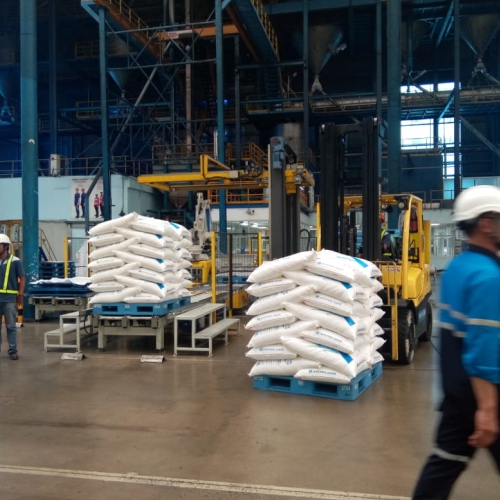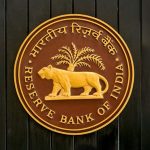The Indian sugar industry is on the cusp of significant regulatory transformation with the introduction of the Revised Draft Sugar (Control) Order, 2024. This new draft aims to modernize and expand upon the foundational Sugar (Control) Order of 1966, which has long governed the sector. As the sugar industry evolves, so too must the regulations that oversee it, ensuring they are aligned with contemporary economic realities, technological advancements, and sustainability goals.
In this article, we take an in-depth look at the key changes proposed in the Revised Draft Sugar (Control) Order, 2024, and how these updates differ from the existing order. From the fundamental aspects like the title and commencement to more complex areas such as production regulation, quality control, and digital integration, we will explore how these changes are poised to impact the industry. The new draft not only retains the traditional focus on sugar production but also broadens its scope to include byproducts like ethanol, molasses, and biogas, reflecting the growing importance of bioenergy and sustainable practices within the industry.
By comparing specific clauses of the existing order with those of the revised draft, this article will provide insights into the regulatory shifts and their implications for sugar producers, traders, and the broader agricultural sector. Whether you are a stakeholder in the sugar industry, a policy enthusiast, or someone interested in the intersection of agriculture and energy, this detailed analysis will offer valuable perspectives on the future of India’s sugar sector under the revised regulatory framework.
Clause 1: Short Title, Extent, and Commencement
Title: Likely refers to the year of enactment, such as “Sugar (Control) Order, 1966.”
Applicability: Applies to all of India.
Commencement: Effective from a specific past date.
Revised Draft (2024):
Title: Updated to “Sugar (Control) Order, 2024.”
Applicability: Continues to apply to all of India.
Commencement: Effective from the date of publication, ensuring immediate enforcement.
Comparison:
The key differences are the updated title year and the immediate commencement clause. The scope remains unchanged, covering all of India. While there are no major conceptual shifts, the updated year reflects the latest regulations.
Impact on the Sugar Industry:
Immediate enforcement requires quick adaptation by sugar producers, traders, and manufacturers of byproducts, ensuring alignment with new regulatory requirements from the outset.
Clause 2: Definitions
Definitions were likely generic, covering terms like “sugar,” “sugar factory,” “producer,” “dealer,” and possibly “essential commodity.”
Included basic sugar categories, such as Plantation White Sugar or Refined Sugar, but not in exhaustive detail.
Revised Draft (2024):
Definitions are expanded to include specific technical descriptions, such as:
Plantation White Sugar: IS:59822003 or its latest revision.
Raw Sugar: IS:11512003 or latest.
Refined Sugar: IS:11522003 or latest.
Khandsari Sugar: IS:4982003 or latest.
Additional terms for byproducts like molasses, bagasse, ethanol, biogas, compost/fertilizer.
Aligns with Bureau of Indian Standards (BIS) to ensure conformity with national technical guidelines.
Comparison:
The revised order provides detailed definitions with BIS specifications, offering clarity on various sugar products and byproducts, including those related to bioenergy and sustainability. In contrast, the existing order had more general definitions.
Impact on the Sugar Industry:
Clearer definitions aid standardization, allowing producers to focus on compliance with national standards. This enhances product consistency and competitiveness in domestic and international markets, as well as aids in better classification for regulatory and taxation purposes.
Clause 3: Power to Regulate Production of Sugar
Existing Order (1966):
The Central Government had the authority to regulate sugar production, including licensing of sugar factories, focusing solely on sugar production from sugarcane.
Revised Draft (2024):
Both Central and State Governments, with Central approval, can regulate the production of sugar and its byproducts such as ethanol, molasses, and fertilizers derived from sugarcane.
Licensing is required for the production of sugar and its byproducts.
Comparison:
The revised order expands the regulatory power to include not just sugar but also its byproducts, acknowledging the growing importance of bioenergy and other related sectors in the sugar industry.
Impact on the Sugar Industry:
The broader regulation of byproducts supports diversification of revenue streams, especially from ethanol, which aligns with India’s biofuel policies. However, this expansion may lead to additional compliance costs and more complex bureaucratic oversight.
Clause 4: Power to Restrict Sale, Storage, and Disposal
Existing Order (1966):
The Central Government could impose restrictions on the sale, storage, and disposal of sugar. Financial institutions could handle pledged sugar.
Revised Draft (2024):
Extends restrictions to sugar and its byproducts.
Specifies handling of pledged sugar to financial institutions, prohibiting sale without government orders.
Byproducts like ethanol are also subject to sale and storage restrictions.
Comparison:
The revised draft includes byproducts in the restrictions and pays special attention to sugar pledged to financial institutions, reflecting expanded regulatory oversight.
Impact on the Sugar Industry:
Byproduct restrictions introduce new compliance challenges, but they also ensure market stability and prevent speculative practices. Regulating storage and sale helps stabilize production and supply, reducing market volatility.
Clause 5: Power to Issue Directions to Producers and Dealers
Existing Order (1966):
The Central Government could issue directions on stock maintenance, storage, sale, and sometimes pricing of sugar.
Revised Draft (2024):
Powers extended to include byproducts.
Introduces guidelines for grading, packing (e.g., jute bags), pricing, and other quality controls.
Applies to the entire supply chain, including stocks, storage, sale, and packaging.
Comparison:
The revised order significantly broadens the scope of government directives, incorporating specific standards for packaging, grading, and quality control, covering both sugar and its byproducts.
Impact on the Sugar Industry:
Enhanced oversight on quality, pricing, and packaging boosts export potential by aligning products with international standards. Smaller producers might struggle with the new requirements, leading to potential industry consolidation.
Clause 6: Sugar and Its By-Products Attached by Government Officers
Existing Order (1966) (Clause 5-A):
Provisions existed for attachment (seizure) of sugar by government officers for violating any regulations or orders.
The sale of such attached sugar was regulated under Clause 5-A, which stated that sugar attached or seized by government officers or courts could not be sold without directions from the Central Government.
Revised Draft (2024) (Clause 6):
Extends the provision to include by-products like ethanol and molasses, in addition to sugar.
Prohibits the sale or disposal of attached products without specific government directives.
Comparison:
The revised draft (Clause 6) broadens the scope to ensure that by-products are treated similarly to sugar concerning attachment and disposal by government officers, as compared to the existing order (Clause 5-A).
The revised draft (Clause 6) maintains the same conditions for sale as the existing order (Clause 5-A), requiring directions from the Central Government under Clause 5.
Impact on the Sugar Industry:
Expanded attachment provisions in the revised draft (Clause 6) ensure tighter control over compliance violations, protecting the market from illegal practices and improving industry credibility.
However, this adds to the legal and operational burdens for producers, who must safeguard against possible seizures and ensure compliance with regulations.
Clause 7: Power to Regulate Price of Sugar
Existing Order (1966):
The government regulated sugar prices, typically based on the Fair and Remunerative Price (FRP) of sugarcane and production costs.
Revised Draft (2024):
The government will regulate prices for sugar and its byproducts.
Considers factors like FRP, production costs, and revenues from byproducts in price regulation.
Comparison:
The revised draft includes the pricing of byproducts, recognizing their growing economic importance to the industry.
Impact on the Sugar Industry:
Price regulation of byproducts could stabilize market prices, particularly for ethanol, assisting mills in managing revenue fluctuations. However, strict price controls might limit profitability if they do not reflect actual production costs or market demand.
Clause 8: Power to Regulate Movement of Sugar and Its By-Products
Existing Order (1966) (Clause 6):
The Central Government controlled the movement of sugar within and across state lines, often requiring permits.
Exemptions existed for bona fide travelers carrying sugar up to 1 kilogram as part of their personal luggage.
Revised Draft (2024) (Clause 8):
Expands movement controls to by-products like ethanol and molasses, in addition to sugar.
Specifies exemptions for bona fide travelers and limited personal use, similar to the existing order.
Comparison:
The revised draft (Clause 8) broadens control to include by-products, ensuring comprehensive regulation of the entire production cycle, including transport, as compared to the existing order (Clause 6).
The revised draft maintains similar exemptions for bona fide travelers and limited personal use.
Impact on the Sugar Industry:
Movement restrictions can enhance market discipline and prevent black market activities, safeguarding proper taxation and market integrity.
However, they could complicate logistics and increase costs, especially for large-scale by-product trade.
Clause 9: Power to Regulate Quality of Sugar and Its By-Products
Existing Order (1966) (Clause 7):
Quality control provisions existed, generally aligning with industry standards for sugar.
The Central Government could prescribe quality standards and direct producers to reprocess or sell substandard sugar to bulk consumers.
Revised Draft (2024) (Clause 9):
Extends quality regulations to by-products, adhering to Indian Sugar Standard Grades.
May require reprocessing or disposal of substandard sugar and by-products.
Comparison:
The revised draft introduces stricter quality control for both sugar and by-products, incorporating formal grading systems to maintain high standards.
The revised draft expands quality regulations to by-products, ensuring comprehensive quality control.
Impact on the Sugar Industry:
Enhanced quality regulations improve product consistency and consumer trust, crucial for domestic and export markets.
However, compliance may necessitate investments in quality control measures, potentially raising operational costs.
Old Clause 9: Utilization of Sugar Taken Delivery Under Orders
Existing Order (1966):
Recipients of sugar deliveries were required to use it for specified purposes and report compliance.
Revised Draft (2024): Omitted
Clause 10: Power to Call for Information
Existing Order (1966):
The government could demand information from sugar producers, dealers, and factories.
Revised Draft (2024):
Extends information requests to include byproducts.
Introduces digital reporting, requiring integration with government systems for real-time data sharing.
Comparison:
The revised draft modernizes information collection through digital platforms, covering both sugar and byproducts for faster and more accurate compliance.
Impact on the Sugar Industry:
Digital reporting improves transparency and oversight, benefiting larger players with advanced digital infrastructure. However, smaller producers may face challenges in adopting these systems.
Clause 11: Power of Inspection, Entry, Search, Sampling, Seizure
Existing Order (1966):
Provisions allowed for inspection, search, seizure, and sampling of sugar.
Revised Draft (2024):
Extends these powers to include byproducts.
References modern legislative frameworks like Bhartiya Nagrik Suraksha Sanhita, 2023.
Comparison:
The revised draft incorporates modern legal frameworks and explicitly includes byproducts, ensuring comprehensive regulation of the entire industry.
Impact on the Sugar Industry:
Enhanced powers for inspection and seizure promote compliance with updated standards, improving industry credibility, though they may also increase operational oversight and costs.
Old Clause 12: Procedure for Drawing Samples
Existing Order (1966):
Basic sampling procedures were in place for sugar quality and purity checks.
Revised Draft (2024): Omitted
Old Clause 13: Certificate Regarding Samples Drawn
Existing Order (1966):
Required certification of samples, typically signed by authorities and producers.
Revised Draft (2024): Omitted
Clause 13: Compliance of Orders
Existing Order (1966) Clause 14:
Producers and dealers were required to comply with government issued orders.
Revised Draft (2024): No Change
Clause 14: Delegation of Powers
Existing Order (1966) Clause 15:
Powers could be delegated to state officers or local authorities.
Revised Draft (2024): No Change
Clause 15: Repeal and Savings
Existing Order (1966) Clause 17:
Previous orders were repealed, maintaining the validity of past actions to ensure legal continuity.
Revised Draft (2024): No Major Changes
Conclusion:
The Revised Draft Sugar (Control) Order, 2024, significantly broadens the regulatory framework of the original order, not only reinforcing controls over sugar but also extending them to byproducts like ethanol, molasses, and biogas. This comprehensive approach reflects the industry’s shift towards bioenergy and sustainability, with updated digital integration, stricter quality standards, and modern legal references.
Overall Impact on the Sugar Industry:
The 2024 revisions create a more robust regulatory environment, promoting transparency, sustainability, and accountability. They support diversification into bio-products, aligning with India’s energy goals, and encouraging market stability. Larger players may find these changes beneficial for long-term growth and competitiveness, while smaller producers could face challenges with increased compliance costs and operational demands. Nonetheless, the amendments are poised to foster a more stable and transparent sugar industry in India.
(Disclaimer: The views and opinions expressed in the article by Dilip Patil, Managing Director of Samarth SSK Ltd., are solely his own.)
Continue reading Chinimandi.com for more news about the Sugar and Allied Sectors.













If Sugar Sector is Not Taken Care .More than 5 Crore Sugar Cane Farmers and their Dependendants and Other Beneficiaries will Stage Protest Against their Governments .it is Need of the Hour To Protect Sugar Industry .few Re Hike of Sugar is Good , Consumers will Consume Less Sugar good for their Health